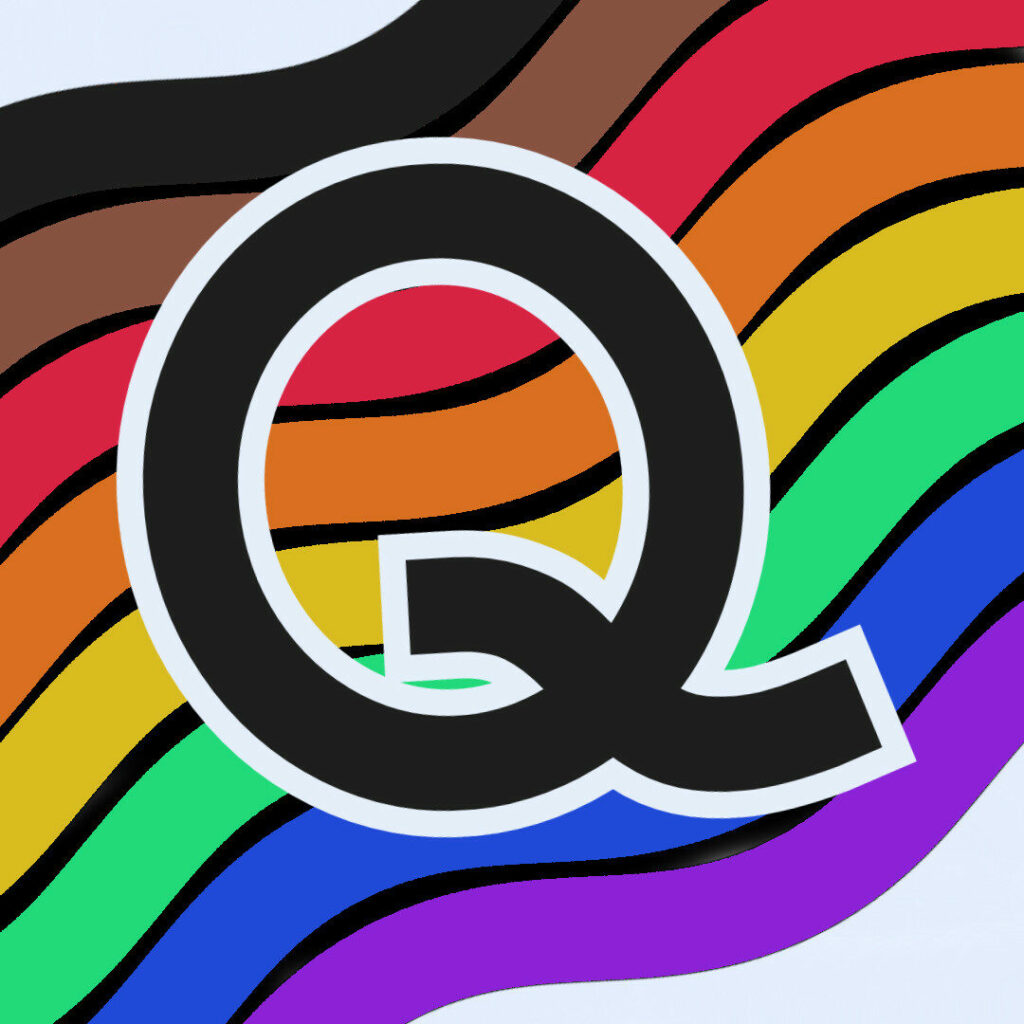The Ever-Present LGBTQ+ Vocab Training

Table of Contents
As library workers, most of us love categorizing things. We’re obsessed with words and their meanings. So much of our work is searching, and we are taught and trained on how to make words work for us. Categorization is our bread and butter – therefore it makes sense (to some degree) that, when faced with a new subject, our first instinct is to learn the vocab. I suggest that this instinct, particularly when aimed at LGBTQ+ staff training, hinders our work, and that there are more effective ways to use our training time.
The Training (dun dun)#
In my experience, there is one kind of training geared towards LGBTQ+ topics that library systems are willing to tackle – a vocabulary training. It’s comfortable, it helps library staff understand terms that might be used, but does it actually help us work with queer patrons? I don’t think so. The vocab trainings (yes, plural) that I’ve attended are long, boring readings of dictionary definitions, often hosted by a cis, straight trainer that has no connection to the vocab or the culture it’s meant to represent. Sometimes we get even less than that, perhaps one sheet of vocab handed out during a general “diversity” training. But who is this vocab helping? We’re trained information professionals, surely if someone asks for a book with an asexual protagonist, we could look that up! As a matter of fact, I suggest you bookmark this site of queer vocabulary (compiled by many awesome librarians, archivists, academics, and historians) and ignore any future training that just focuses on vocabulary. It’s not worth your time, and it’s not helping anyone become a better ally.
I get why we go for the vocab training. It’s easy for our staff trainer, state organizations, invited diversity speaker, etc. to learn quickly and be able to share. It’s not time-intensive, but it has very little value for your time.
So… what would be (more) useful?#
Budgets are stretched to the brink, so why waste time on trainings that can easily be covered by a web search? It would be a much better value to train staff on topics that will improve the quality of the library experience for both patron and staff alike.
Allyship in the Library#
This is a basic training that gets a lot of bang for its buck. Topics covered in an allyship training involve (but aren’t limited to):
- Always model queer-affirming behavior, regardless of your assumptions about a patron’s sexuality or gender identity. This includes asking for pronouns, wearing your pronoun on a button (yes this really helps!), not assuming what bathroom a person needs, calling out anti-LGBTQ+ behavior from patrons or colleagues, using gender-inclusive language, and much more.
- Have inclusive book displays, book lists, and programs. Please stop reserving queer books for Pride displays – we’re queer all year!
- Partnering with LGBTQ+ groups
- How to identify that someone’s signalling that they need queer recommendations :arrow_ left: this is where queer vocabulary comes in handy
You don’t have to go super in-depth with any of these sections in an allyship training – like I said, this is a BASIC training. Provide resources for staff so they can do deeper dives (there are lots of resources on GLSEN, The Trevor Project, and ALA’s Rainbow Round Table), and I highly recommend getting buttons so people can display their willingness to help LGBTQ+ patrons. Identity flags and pronoun buttons would be ideal.
Queer Programming#
This is exactly what it sounds like – how and why to host queer programming, with a brainstorming session for programming ideas. This type of training could be generalized or localized to your geographic area. I recommend covering the demographic needs of your LGBTQ+ population; in Indiana, for example, LGBTQ+ people are likely to work in lower-income jobs due to discrimination, are still often ostracized from family at a younger age, and we often face worse health outcomes due to discrimination and income inequality. The demographic needs of your area will help you discover programming that could be useful to lots of people, but particularly to your queer population – things like resume workshops, free entertainment options (like a movie club or book club), and health classes would be useful given the particular needs of my community. This training could also cover how to advertise to a queer population
Reader’s Advisory#
This training would go into further depth about how to provide reader’s advisory for queer readers. You don’t have to know all the terms to be able to provide this service, but it is definitely more advanced than “be a good ally”. Knowing that patrons might feel shy asking you about a gay romance (which some straight patrons are shy about romance too!) and might dance around the topic, or that they might wish to be more self-guided out of fear of discrimination is useful. Passive and active reader’s advisory would ideally be covered, like making book displays and book lists that always involve queer content to knowing the top Own Lives authors.
Sensitivity Training#
What do you do if you have staff that are resistant to help LGBTQ+ patrons? If you have staff who are disrespectful to co-workers that are queer? Well, it might be time to send them to sensitivity training. I highly recommend being proactive when discrimination is noticed – yes, the staff member might usually be great with all patrons, but one instance of queer discrimination will spread and foster a negative reaction in the community, and could cause staff discord. There are lots of organizations around the United States that hold sensitivity trainings (in Indiana, Indiana Youth Group holds a few each year), and they’re super at helping staff move back to neutral or positive regarding LGBTQ+ people.
Final Thoughts#
There’s so much to write about staff training when it comes to queering the library, and this is just the tip of the iceberg. My best beginner’s advice is please, don’t give in to the simplicity of a vocabulary training. It bores staff and does so little for your patrons. Think past the vocab sheet, get a little creative, and don’t be afraid to get messy. Inclusion initiatives will directly conflict with the worldview of some of your staff, so mess is almost guaranteed, but I promise you it’s worth it.
Photo description and credit: A brick wall with a crossword painted on it. Photo by Jelleke Vanooteghem on Unsplash.
